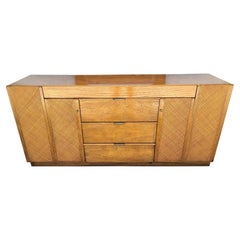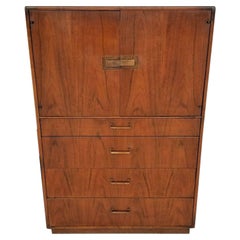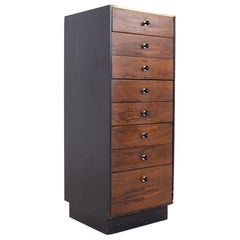Mcm Founder Dresser
Vintage 1970s Mid-Century Modern Dressers
Glass, Wicker, Wood
Recent Sales
Vintage 1960s Mid-Century Modern Dressers
Brass
Vintage 1970s American Mid-Century Modern Dressers
Ash, Rosewood
People Also Browsed
21st Century and Contemporary Mexican Mid-Century Modern Table Lamps
Fiberglass, Linen, Fabric, Wood
2010s South African Minimalist Pedestals
Hardwood
Vintage 1970s Italian Coffee and Cocktail Tables
Walnut
2010s American Modern Cabinets
Brass
Vintage 1970s Mid-Century Modern Sideboards
Brass
Mid-20th Century Modern Credenzas
Travertine, Chrome
21st Century and Contemporary Portuguese Modern Center Tables
Wood
Mid-20th Century Mid-Century Modern Dressers
Walnut
Vintage 1970s Italian Credenzas
Chrome
21st Century and Contemporary American Mid-Century Modern Credenzas
Acrylic, Burl, Wood
Vintage 1960s American Credenzas
Laminate
20th Century Danish Scandinavian Modern Credenzas
Mahogany, Oak, Rosewood
Mid-20th Century Mid-Century Modern Dressers
Walnut
20th Century Mid-Century Modern Cabinets
Walnut
Vintage 1960s Mid-Century Modern Credenzas
Chrome
2010s Mexican Post-Modern Credenzas
Oak
Founders Furniture Company for sale on 1stDibs
Founders Furniture Company was a short-lived 20th-century American brand that produced enduring mid-century modern designs. The company's streamlined dressers, lounge chairs and coffee tables feature solid wood construction and simple but elegant designs.
The history of Founders Furniture Company began in 1946 when it was established as a subsidiary of Knoll Inc., an esteemed manufacturer known mainly at the time for its pioneering workplace furniture — largely owing to the work of visionary designer Florence Knoll — so it launched Founders as its residential division.
During its years of operation, Founders hired celebrated American modernist designers like Milo Baughman and David Parmelee, who created sleek commodes and sideboards in mahogany and rosewood for the brand. Michigan native Jack Cartwright, a designer at Heritage during the 1950s, also worked at Founders as head designer before moving on to start his eponymous furniture company in 1963.
Founders continued operations until 1965 when Thomasville Furniture acquired it. Established in 1904 in North Carolina — home to other iconic mid-century brands such as Drexel and Broyhill — Thomasville expanded significantly during the 1960s and purchased several other American furniture manufacturers.
Today, the timeless styles and exceptional craftsmanship associated with Founders Furniture Company pieces continue to render them desirable even for today’s interiors.
On 1stDibs, find vintage Founders case pieces, seating, tables and more.
A Close Look at Mid-century-modern Furniture
Organically shaped, clean-lined and elegantly simple are three terms that well describe vintage mid-century modern furniture. The style, which emerged primarily in the years following World War II, is characterized by pieces that were conceived and made in an energetic, optimistic spirit by creators who believed that good design was an essential part of good living.
ORIGINS OF MID-CENTURY MODERN FURNITURE DESIGN
- Emerged during the mid-20th century
- Informed by European modernism, Bauhaus, International style, Scandinavian modernism and Frank Lloyd Wright’s architecture
- A heyday of innovation in postwar America
- Experimentation with new ideas, new materials and new forms flourished in Scandinavia, Italy, the former Czechoslovakia and elsewhere in Europe
CHARACTERISTICS OF MID-CENTURY MODERN FURNITURE DESIGN
- Simplicity, organic forms, clean lines
- A blend of neutral and bold Pop art colors
- Use of natural and man-made materials — alluring woods such as teak, rosewood and oak; steel, fiberglass and molded plywood
- Light-filled spaces with colorful upholstery
- Glass walls and an emphasis on the outdoors
- Promotion of functionality
MID-CENTURY MODERN FURNITURE DESIGNERS TO KNOW
- Charles and Ray Eames
- Eero Saarinen
- Milo Baughman
- Florence Knoll
- Harry Bertoia
- Isamu Noguchi
- George Nelson
- Danish modernists Hans Wegner and Arne Jacobsen, whose emphasis on natural materials and craftsmanship influenced American designers and vice versa
ICONIC MID-CENTURY MODERN FURNITURE DESIGNS
- Eames lounge chair
- Nelson daybed
- Florence Knoll sofa
- Egg chair
- Womb chair
- Noguchi coffee table
- Barcelona chair
VINTAGE MID-CENTURY MODERN FURNITURE ON 1STDIBS
The mid-century modern era saw leagues of postwar American architects and designers animated by new ideas and new technology. The lean, functionalist International-style architecture of Le Corbusier and Bauhaus eminences Ludwig Mies van der Rohe and Walter Gropius had been promoted in the United States during the 1930s by Philip Johnson and others. New building techniques, such as “post-and-beam” construction, allowed the International-style schemes to be realized on a small scale in open-plan houses with long walls of glass.
Materials developed for wartime use became available for domestic goods and were incorporated into mid-century modern furniture designs. Charles and Ray Eames and Eero Saarinen, who had experimented extensively with molded plywood, eagerly embraced fiberglass for pieces such as the La Chaise and the Womb chair, respectively.
Architect, writer and designer George Nelson created with his team shades for the Bubble lamp using a new translucent polymer skin and, as design director at Herman Miller, recruited the Eameses, Alexander Girard and others for projects at the legendary Michigan furniture manufacturer.
Harry Bertoia and Isamu Noguchi devised chairs and tables built of wire mesh and wire struts. Materials were repurposed too: The Danish-born designer Jens Risom created a line of chairs using surplus parachute straps for webbed seats and backrests.
The Risom lounge chair was among the first pieces of furniture commissioned and produced by celebrated manufacturer Knoll, a chief influencer in the rise of modern design in the United States, thanks to the work of Florence Knoll, the pioneering architect and designer who made the firm a leader in its field. The seating that Knoll created for office spaces — as well as pieces designed by Florence initially for commercial clients — soon became desirable for the home.
As the demand for casual, uncluttered furnishings grew, more mid-century furniture designers caught the spirit.
Classically oriented creators such as Edward Wormley, house designer for Dunbar Inc., offered such pieces as the sinuous Listen to Me chaise; the British expatriate T.H. Robsjohn-Gibbings switched gears, creating items such as the tiered, biomorphic Mesa table. There were Young Turks such as Paul McCobb, who designed holistic groups of sleek, blond wood furniture, and Milo Baughman, who espoused a West Coast aesthetic in minimalist teak dining tables and lushly upholstered chairs and sofas with angular steel frames.
Generations turn over, and mid-century modern remains arguably the most popular style going. As the collection of vintage mid-century modern chairs, dressers, coffee tables and other furniture for the living room, dining room, bedroom and elsewhere on 1stDibs demonstrates, this period saw one of the most delightful and dramatic flowerings of creativity in design history.
Finding the Right Dressers for You
Antique, new and vintage dressers are a staple in any household. Whether it’s a 19th-century solid pine or oak Welsh kitchen dresser you’re using to store tableware or a Broyhill Brasilia highboy in your bedroom, these furniture fixtures are essential for making the most of your space.
The first step in finding the perfect dresser is considering your particular needs. Most tall dressers offer anywhere from five to seven drawers, essentially allowing for the organization of an entire wardrobe, while shorter, waist-height dresser varieties can be equipped with a convenient vanity mirror.
A highboy dresser is usually around six feet tall, with some versions standing even taller at seven feet or so. Highboys, which began to appear with frequency during the early 17th century in England, are essentially very tall dressers with lots of drawers, whereas a lowboy is a different type of storage furniture in that it's a dressing table with one or two rows of drawers.
When shopping for your antique or vintage dresser, consider those that bear the hallmarks of solid construction. Good furniture means making an investment, and solid hardwood pieces of maple, walnut or cherry will prove far more durable than a bedroom dresser made of particleboard.
If you’re looking for a mid-century modern case piece that boasts a subdued pairing of wood grains and uncomplicated drawer pulls, browse elegant dressers designed by Florence Knoll, Harvey Probber, Paul McCobb and other furniture makers associated with the celebrated style on 1stDibs.
Dressers characterized by bolder designs are also popular: Not only will your new piece of furniture be a storage solution, but it'll also make a statement.
Art Deco furniture makers preferred to work with dark woods and typically incorporated decorative embellishments. An ornately carved French or Italian Art Deco dresser complete with vanity mirror and cabriole scrolled feet might better complement the other pieces in your home. Alternatively, if you favor sumptuous antique furniture with curving lines and floral flourishes, the collection on 1stDibs also includes sophisticated 1800s-era Victorian walnut dressers and washstands with marble tops.
After all, a good case piece isn’t merely for minimizing clutter in your space. The style of your chosen dresser and its specific attributes should add something to your decor and your home. Modern creations include one-of-a-kind shapes, like the venturesome chests of drawers in leather, marble and wood crafted by the likes of Roberto Cavalli.
Explore a broad array of antique and vintage dressers today on 1stDibs.


